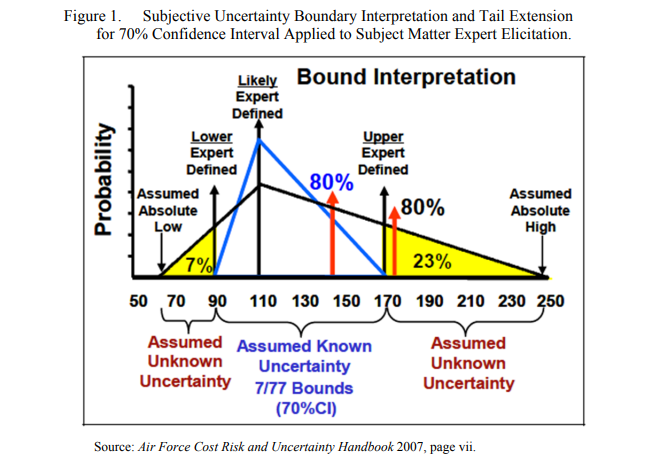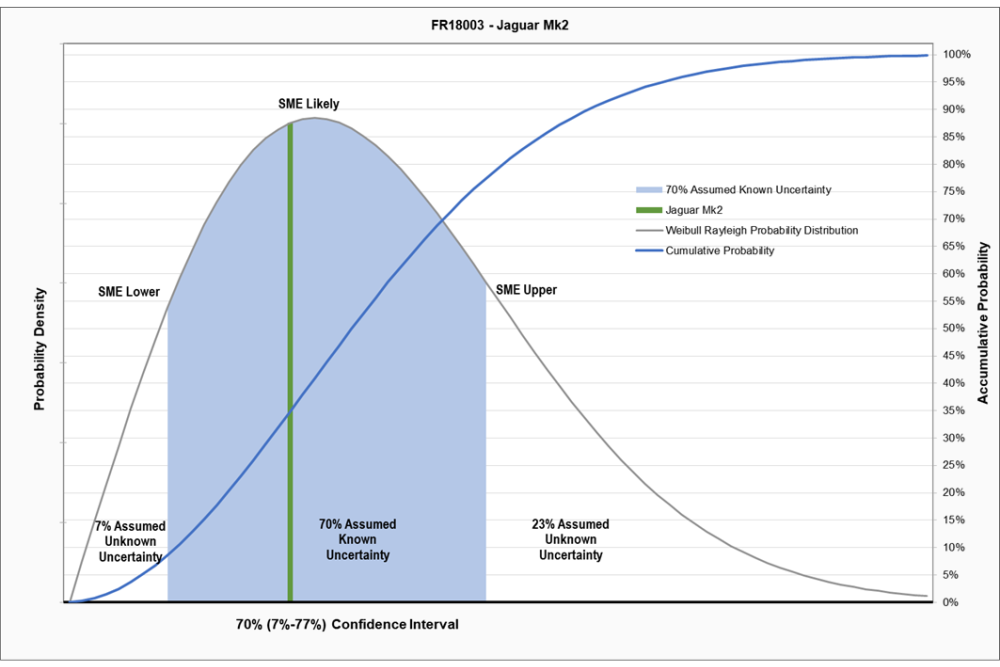FAQ: Why Are Vehicle Restoration Estimates Uncertain?
Introduction
In the car community, it is often asked why restoration estimates vary and can change over time. The short answer: restorations are journeys of discovery. This FAQ explains why even with decades of experience and a structured approach, we — like restoration professionals around the world — must treat estimating as a probabilistic, evolving process.
We draw insight from established practices such as those in the United States Air Force's Cost Risk and Uncertainty Analysis Handbook (CRUAH), adapted to the realities of heritage vehicles. The aim: to help set expectations openly and respectfully.
A Restoration Begins in the Dark
Unlike new manufacturing projects that start with controlled inputs and modern materials, restorations begin with unknowns. Until we disassemble the vehicle and progressively examine it in detail:
- Paint and filler may hide corrosion or structural damage.
- Panels may conceal poor-quality past repairs.
- Past owners may have masqueraded repairs.
- Poor factory quality, variability, or latent defects may emerge.
- Components may have failed, been modified, or replaced with poor imitations.
Detailed costing is often premature until:
- Paint and filler are removed,
- Panels and subassemblies are dismantled,
- Inner structures are exposed and inspected,
- Componentry is progressively disassembled.
Even when a vehicle appears sound, surprises can lurk within. We do our best to share our concerns early — but some truths only emerge layer by layer.
The Onion Analogy (and the Broken Stud)
We often say: restoring a car is like peeling an onion — each layer reveals more — or use the pop-culture Forrest Gump quote: Life is like a box of chocolates, you never know what you're gonna get.
Consider this:
- Removing eight studs from a housing might take 30 minutes if all goes well.
- But if one snaps, it could trigger hours of extra work: drilling, re-tapping, helicoiling, remanufacturing, machining.
A simple task can balloon to 10–20 times its expected effort. This isn’t mismanagement — it's restoration reality.
Confidence Bands, Not Fixed Prices
Instead of estimating a single number, we sometimes might provide three-point estimates:
- A lower bound (optimistic scenario),
- A most likely scenario, and
- An upper bound (including reasonable risks).
These echo techniques used by aerospace and government agencies, including the USAF CRUAH, which defines a 70% confidence interval known as the "7/77 bounds":
- 7% chance the cost falls below the lower bound,
- 70% chance it's within the band,
- 23% chance it exceeds the upper bound.
In the restoration industry, different bands — like 5/65/30 — are often more realistic due to the unpredictability of older materials and hidden conditions.

Long-Tail Costs: The Rare but Real
Some projects unfold broadly as expected. Others do not. There's a statistical concept called a "long-tail" — where rare events still have meaningful impact.
Rather than dive deep into mathematical modelling, we simply acknowledge: rare issues happen. When they do, they can significantly increase time, cost, or both.

Parts Sourcing & Availability
Many of the parts we seek are:
- Obsolete,
- Mislabeled or mis-described in vendors' advertisements,
- Unverifiable,
- Sold 'as-is' by backyard vendors with no returns,
- Or simply unavailable without international search efforts.
A minimal-value but rare donor part may consume 10+ hours to identify, verify, source, and negotiate. Sometimes that effort fails — and reverse-engineering and fabrication is required.
Estimating Is Iterative — Not Final
There is no "big reveal" moment when all becomes clear. Restoration is iterative:
- Initial estimates are based on inspection and known model quirks.
- Post-disassembly estimates are refined.
- Further discoveries impact estimates as work progresses.
Costs evolve with the work — much like an episode of Grand Designs, but on steroids — particularly due to the engineering complexity of vehicles and their components compared to buildings and their constituent bulk materials.
Brief Case Studies
- Rust Repair Escalation: Paint removal revealed extensive corrosion, more than tripling the scope.
- Chrome Surprise: Stress cracks under chrome required repair and re-welding.
- Gearbox Discovery: A supposedly reconditioned gearbox was found filled with sawdust and silicone.
- Amateur Attempts: Out-of-sequence or poor-quality work requiring rework without damaging adjacent completed work.
- Abandoned Projects: Missing components and undocumented disassembly added uncertainty.
Complexity & Scarcity
Modern vehicles have over 30,000 parts. Older vehicles may seem simpler — but:
- Parts become rarer with age,
- Documentation may be lost over the deades or have never existed,
- Components often must be reverse-engineered from worn originals.
With each passing decade, restoration complexity increases.
What Other Professionals Say
This is not unique to us. Restoration professionals globally report similar challenges:
- Hemmings (USA): "...in business for many decades working on all different types of cars because they have the right staff with the proper knowledge and experience..." (Hemmings – Dealing with Shops)
- Jay Leno: "Old cars aren't easy — appreciation for hard work is fading." (Hagerty)
- RAC Australia: Restoration types vary widely — from cosmetic to full concours. (RAC)
- Guild of Automotive Restorers (Canada): "Flat rate pricing makes no sense for restoration." (Archived)
- AHP Works (Australia): "Restoring an old car is an evolving process, as secrets of the past are revealed and have to be dealt with." (Archived)
- Crusin' Auto Body (USA): "The true cost is only seen during the actual repair process and each restoration does hold its own unique challenges." (Motorheads Performance Blog)
- Classic Auto Advisors (USA): "... an estimate ... is really a ballpark cost that they believe at that moment in time ..." Cost depends on condition, labour rates, and scarcity. (Classic Auto Advisors)
- Resurrected Classics (USA): "... the path to automotive rejuvenation is often fraught with unexpected obstacles and potential missteps." (Resurrected Classics)
- T&J Restorations (USA): Classic car restoration blends artistry and unpredictability. (T&J Restorations)
- Heritage Cars B.V. (Netherlands): Emphasises the difficulty in predicting restoration costs due to the complexity and uniqueness of each project. (Heritage Cars B.V.)
- SC Parts (U.K.): Notes that the older and rarer a classic car is, the more complex and costly the restoration becomes. (SC Parts Group Ltd)
- Cotswold Classic Car Restorations (UK): States that a comprehensive estimation can only be provided after a thorough strip down and evaluation. (Cotswold Classic Car Restorations)
- Kestrel Classic Cars (UK): Asserts that because classic car restoration is not an exact science, they provide estimates rather than fixed quotes. (Kestrel Classic Cars)
We continue to gather other authoritative voices — particularly from the US, UK, Europe, and Australia — to ensure this FAQ reflects global industry norms.
What You Can Do as a Client
While restoration work is inherently uncertain, you can help shape the journey and support better outcomes by:
- Visiting your project regularly: Seeing progress firsthand aids understanding and allows timely discussions when decisions are needed. Visits are by appointment and always welcomed.
- Reading our reports: We provide regular updates and photos. Reviewing them helps you stay informed.
- Clarifying your priorities: Let us know if you prioritise originality, performance, presentation, or functionality.
You may also:
- Assist in sourcing parts: We welcome help in finding rare components. Please let us assess compatibility before you buy.
Managing Expectations With Respect
It’s natural to seek clarity — but every vintage vehicle is unique:
- No two restorations are the same,
- Scope cannot always be fixed in advance,
- Estimates cannot reasonably sit within 10–20% of outcomes,
- Changes often reflect discoveries, not overruns.
We’re always happy to:
- Share detailed logs and images,
- Explain what’s changed and why,
- Help prioritise within budget,
- Break the scope into practical stages.
Our role is to balance vehicle preservation with financial clarity — always in good faith.
Further Reading & References
- US Air Force Cost Risk and Uncertainty Handbook (2007)
- Hemmings – Dealing with Shops
- Jay Leno – Hagerty
- RAC Australia - types of car restorations
- Guild of Automotive Restorers (Canada) (Archived)
- AHP Works (Australia) (Archived)
- Motorheads Performance (USA) – Estimating An Old Car Restoration
- Classic Auto Advisors (USA)
- T&J Restorations (USA)
- Heritage Cars B.V. (Netherlands)
"It will cost what it costs." – Ray Finch
Far from being a shrug, it reflects a truth earned through decades of craftsmanship.
